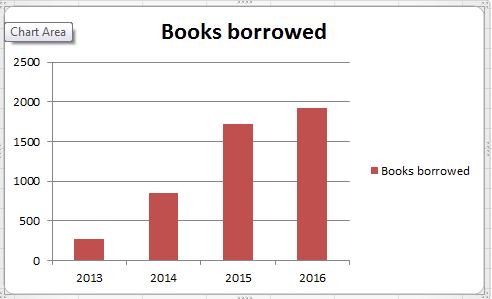It’s all about the books (and the reading … and the writing … )
ETL507 Reflective Portfolio Part 3 – Literacy and Literature
Charles Schultz, Published 1961, from https://librarycartoons.wordpress.com/2010/04/03/somethings-fishy-here/
Libraries have always been a place of refuge for me, a place where I found information, inspiration, and connection. One of my greatest desires in my time in the Library@Evans is to help create that kind of connection for my students and colleagues. I want our library to be a place that they instinctively go to when they need to know, think, feel, discover, wonder. This is a multifaceted goal, which requires both an improvement in the literacy skills of our students and an increased engagement with the resources we have available in our collection.
Evans has been implementing the Reading To Learn (R2L) program, across both the high school and IEC for the past three years. R2L has a strong focus on developing reading and literacy skills through the use of a structured program, focusing on age and stage appropriate texts, regardless of reading ability. I liaised regularly with faculties to ascertain the kinds of resources they needed to support their R2L lessons, and researched texts to ensure their suitability for both syllabus content and reading level. This coincided with the writing of our collection development policy, which our library had previously not had, and provided us with the opportunity to examine the non-fiction collection, and undertake an extensive and much-needed weeding project.
I had, mostly unconsciously, always considered that fiction and non-fiction were the two extremes in our collection – fiction was useful for English and for enjoyment, and non-fiction where you went if you were after knowledge, or resources to support the rest of the subjects on your timetable. One wasn’t better than the other, but they were inherently separate worlds. ETL402 Literature Across the Curriculum challenged those assumptions for me, however (Rodgers, 2015). Pennington’s (2010) discussion about the use of science fiction as an engaging resource for science lessons impacted my perception of useful resources for various curriculum areas. My learning in this subject translated into increased opportunities for my students, as in my consultation with faculties about their subject needs, I deliberately sought out opportunities to provide literature resources for non-traditional literature topics (for example, the graphic novel Ancient History lesson referenced in my first post).
This also let to an investigation of other ways in which I could provide authentic learning opportunities for students, and led to the development of the “Experts of Evans” project. Our aim is to provide student access to people as resources – to engage with experts in their fields of study, rather than simply relying on information located in electronic and print resources.
“Year 9 students were working on an assessment on the impacts of bushfires on the Australian ecosystem. Ms Rodgers organised a guest speaker to give a talk on this topic in the library. Students not only gained insight into their assessment topic but were also very motivated by the inspirational speaker. They also received information on careers in science, which was an unexpected bonus of the session.” SA, EHS Science teacher
This has taught me to challenge my own assumptions about what we traditionally view as appropriate resources for subjects, and to explore ways to expand the connections between texts. My aim, then, is to provide students with a richer learning experience, as they develop greater skills in navigating an increasingly complex world of texts that surround them.
In order for students to improve their reading skills, and thus their engagement with all the wonderful gifts that a rich literary life can offer, we needed to look closely at our fiction collection. Extensive weeding and purchasing was carried out, and I greatly appreciated the lessons learnt during ETL503 Resourcing the Curriculum. Hughes-Hassall’s (2010) guidelines on collection development provided some much-needed guidance as we worked to create a collection that would meet the needs and interests of our students, and helped with the development of our collection management plan. Similarly, Olin’s discussion of the importance of weeding helped guide the decisions we made in regards to resources that had been on the shelves for years without being touched. Regular consultation with students, along with liaising with booksellers and reader advisory sites, helped us to create a more appealing fiction collection. This, combined with frequent promotion of the collection (for example, through our @evanslibrary Instagram account), led to a significant increase in borrowing. This table shows overall borrowing, which has had a consistent upward trend. In 2017, our aim is to further analyse engagement with the collection across the various section we have, to gain a greater understanding of borrowing patterns and needs.
The increased enthusiasm shown by our school community for engaging with the wonderful worlds that surrounded them on the shelves has been evident, too, in the increased interest and involvement in library activities, such as writing workshops, author talks, and reading bootcamps. Over the 2016-2017 summer holidays, we ran an Evans Summer Reading Challenge, which required students to sign up, filling out a personal reading preference survey, and then take home a specially selected collection of books to read. You can read more about the whole challenge HERE. The success of this challenge is a key indicator of the increased engagement of both students and staff with the library, and the improving reading culture of our school.
When asked for feedback on our library, one staff member provided the following list of her thoughts, which I think encapsulates for me the successes we have accomplished in recent years.
Where to from here?
Back to the beginning – Introduction
Part 1 – The Role of the Teacher Librarian
Part 3 – Literacy and Literature (you are here)
Part 4 – Conclusion and References

